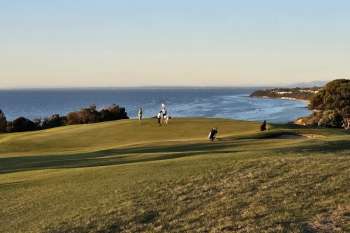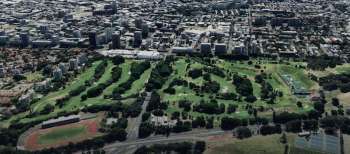Robert Trent Jones II makes his ‘Public Golf Proclamation’
Just when you thought that Robert Trent Jones II’s design company had scraped the marketing barrel with its Green Proclamation of a few years back, an even fluffier and more pointless piece of spin was released this week – the Robert Trent Jones II Public Golf Proclamation.
Released strategically ahead of the decision to award the design contract for the RIO 2016 Olympic golf course, the Public Golf Proclamation aims to position Jones Junior’s company as champions of affordable, accessible public course golf. A media release announcing the documents creation describes the Proclamation somewhat cryptically as, ‘our exclusive commitment to inclusiveness.’
Despite the declaration, this ‘exclusive commitment’ will apparently not prevent Jones II’s company from soliciting private club and real estate contracts. Instead, it simply reaffirms the commitment of the company to create golf courses that are inexpensive, and accessible to everyone who wishes to play them. In other words, courses that are unlike most of the 300 odd RTJ II courses currently in play around the world.
As ‘Master Architect’ Robert Trent Jones Jr himself states, ‘we will continue to design the best possible courses—from private to resort to municipal layouts— for our many and varied clients. But we believe that golf should also be easily affordable and accessible to everyone who wishes to play it.’
Jones adds astutely that, ‘golf first developed 500 years ago as an accessible and affordable sport that brought people together outdoors, rather than separating them. Many great golf courses serve the public and the environment. The future of our sport lies in embracing the Scottish tradition in which all people are equal as they stand over a white ball.’
Like the Green Proclamation, on the surface the dialogue here has some merit, as does the notion of a major signature design company promoting public course golf. The issue we have with these marketing slogans is that there is no commitment from RTJ II to drop their design fees, nor any acknowledgement that their own practices over the last few decades have contributed to the problems faced by the industry today. RTJ II are far from the worst signature design company, but their courses are expensive to build and maintain and those that we have seen, in all corners of the world, are almost completely at odds with the philosophies now espoused in the Public Golf Proclamation.
Still for the sake of completeness, here in full is the Public Golf Proclamation.
In an effort to foster the communal spirit of the game we offer the following declaration to golfers and prospective golfers of every nation:
We aspire to:
1. Work with municipalities and other government entities to create great golf courses for their citizens through insightful, integrated master plans specific to each community. (PG – presumably that means, work with municipalities prepared to pay the inflated RTJ II design fees. Note also the very subjective use of the word great.)
2. Assist communities in creating programs and initiatives that make great public courses accessible and affordable to everyone. (PG – such as making public golf courses public?)
3. Advocate for the creation of golf facilities on degraded sites to return unproductive land to productive and sustainable public uses. (PG - like Chambers Bay, which cost the council a lazy $20 Million)
4. Always protect and enhance the environment for the good of all.
5. Design courses that require less earth moving, water, fertilizer, and other resources in an effort to keep investment and operating costs—and therefore green fees—reasonable. (PG - unless they occupy degraded sites? See point 3)
6. Create wider strategic routings and sets of shorter "family tees" to encourage children to take up golf and have fun playing it.
7. Advocate for innovative practice facilities where young people and newcomers can learn to love golf, and support programs and organizations that introduce new players to the sport.
8. Design facilities that encourage speed of play, including inventive layouts such as "Learning Courses," par-three routings, 6-, 9-, and 12-hole loops, and others.
9. Create public courses that are flexible, fun, and challenging to golfers of a wide range of abilities. (PG – is this different to No. 6?)
10. Encourage golf course owners to support local businesses and take an active role in their communities.
As previously stated, there is some good text in here but the whole document needs to be digested with a decent grain of salt given the previous 300 odd courses created by this company. As Jones II himself noted in the introduction, the concept of communal, affordable golf has been around for as long as the game has been in existence. The idea, therefore, that a company with such a long history is suddenly, in 2012, championing the cause of the public course golfer unfortunately smacks of opportunism.
For more information on the Robert Trent Jones II design company Click Here.
Back to NewsMore News
Report reveals golf's $3.3 billion contribution to Australia
AGIC report reveals total annual benefits to the Australian community, economy and environment from golf.
Cape Wickham Links – The Inside Design Story
Co-designer Darius Oliver reveals the truth behind the design of Australia’s premier modern golf course
Min Woo Lee signs up for Aussie PGA title defence
Reigning champion locks in the defence of his title at Royal Queensland Golf Club in November
Have your say on the future of Moore Park Golf
Golfers unite – another one of our cherished public access golf courses is under threat




